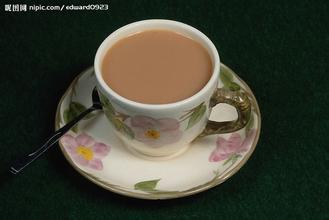Introduction of Guatemala Antigua Coffee Flavor Manor with good sour taste
Guatemala is located in the tropics, the northern and eastern coastal plains have a tropical rain forest climate, the southern mountains have a subtropical climate, the year is divided into two dry and wet seasons, with the wet season from May to October and the dry season from November to April of the following year. The narrow and fertile flatlands on the Pacific side of Guatemala have a tropical climate. The central plateau is also the cultural center of Guatemala, where temperatures are mild all year round at an altitude of 1300 to 1800 meters, with daily temperatures between 18 and 28 ℃, and higher levels tend to be colder in January and February. The annual precipitation is 2000-3000 mm in the northeast and 500-1000 mm in the south. [8]
Topography and geomorphology
All of Guatemala is made up of mountains and plateaus. There are Kuchu Matanes Mountains in the west, Madre Mountains in the south, volcanic belts in the west and south, with more than 30 volcanoes. Tahumurco volcano is 4211 meters above sea level, which is the highest peak in Central America. Earthquakes are frequent. There are Petten lowlands in the north. There are narrow coastal plains on the Pacific coast. The major cities are mostly distributed in the intermountain basins in the south. The northern lowland plain Peteng is a tropical rain forest, and volcanoes on the central highlands can reach 4200 meters. [5]
Hydrology
There are several lakes in Guatemala, of which the largest lake is Lake Isawar in the province of Isawar and the deepest lake is Lake Attilan in the province of Solola. The main rivers that flow through Guatemala are the Motagua River, the Usuma Xinda River, the Chikso River and the Shaston River. The Chikso River is the source of the Ursuma Xinda River. [7]
Natural resources editor
The forest area of Guatemala accounts for half of the country, especially in the lowlands of Peteng.
Guatemala
Guatemala
Rich in valuable wood such as mahogany. Mineral resources include lead, zinc, chromium, antimony, gold, silver, mercury and nickel, with oil reserves of 1.43 billion barrels. The forest area accounts for 38% of the national area.
Bitter and fragrant, good taste
The coffee produced in the highland is mellow and has a good sour taste, which is well received and is the best material for mixed coffee.
Coffee varieties:
Arabica species (Arabica):
It accounts for 85% of total coffee production, including Brazil, Colombia, Guatemala, Ethiopia and so on. The beans are turquoise, thin and small, with special aroma and sweet acid, which is good to drink with other coffee. Excellent quality, more suitable for public taste.
Robada species (Robusta):
Roughly planted in Java, Indonesia, drought-resistant and insect-resistant; bitter taste, but bitter with fragrance, especially after cooling with a unique sweet taste, suitable for the preparation of cold coffee, mellow and extremely bitter.
Liberia plus species (Leberica):
The quantity of this variety is very small, most of it is used to synthesize coffee and make coffee essence, it is difficult to see in the market, the quality is not good, and the coffee beans in each producing area have their own characteristics, and they have won a lot of praise for Guatemala in the international community, especially Antigua, how perfectly coordinated its sour, sweet and mellow texture is. Add a hint of smoke and emphasize its mystery, and after tasting it, you will have a reason not to look for substitutes everywhere.
Guatemalan coffee beans are mostly cultivated in high-altitude volcanic soils belonging to the most advanced Arabica varieties. Due to the long ripening period, the beans are medium and dense (Guatemalan coffee beans are graded not on the basis of particle size, but on the basis of shortcomings), and the bean color is dark turquoise. The unique sour taste of fragrance, mellow, sweetness and freshness is characterized by the aroma and taste of coffee beans hidden in its sour taste. Therefore, coffee beans with this characteristic can be called first-class coffee beans. The name of the product is suitable for baking degree and taste characteristics. There are few places in the world, such as a variety of high-quality coffee beans produced in Guatemala. The excellent quality of Guatemalan coffee beans is due to the unique conditions of their producing areas, including different climate change in each region, rich soil formed by volcanoes, abundant natural water resources, high-altitude mountains and shady and moist forests.
Guatemala has seven main coffee producing areas: Antigua,Coban,Atitlan,Huehuetenango,Fraijanes,Oriente and San Marcos

Important Notice :
前街咖啡 FrontStreet Coffee has moved to new addredd:
FrontStreet Coffee Address: 315,Donghua East Road,GuangZhou
Tel:020 38364473
- Prev

Introduction to the characteristics of the flavor and taste production area of Costa Rica's St. Roman Coffee Manor with clear flavor
Costa Rica is one of the first countries in the Americas to establish a democratic system, and the idea of freedom and equality is deeply rooted. Costa Ricans love peace and oppose violence. As early as December 1, 1948, Costa Rica announced the abolition of the armed forces and the establishment of the National Guard, becoming the first country in the world without an army. [7] in 2007, there were 18000 police officers, which put an end to the possibility of soldiers interfering in politics.
- Next

Introduction to Panamanian Cupid Cupid Coffee Flavor and Flavor Manor
The overall economy is at a low level of development, agriculture, forestry and fisheries account for the majority of people's livelihood, but shipping-related enterprises and part of the financial and insurance industry have international status, resulting in a small number of super-rich class, a large gap between the rich and the poor. Panama is rich in forest resources and has many tropical tree species. Mahogany, cedar, teak and other timber are abundant in the east, providing a small number of internationally competitive exports, farmers.
Related
- Detailed explanation of Jadeite planting Land in Panamanian Jadeite Manor introduction to the grading system of Jadeite competitive bidding, Red bid, Green bid and Rose Summer
- Story of Coffee planting in Brenka region of Costa Rica Stonehenge Manor anaerobic heavy honey treatment of flavor mouth
- What's on the barrel of Blue Mountain Coffee beans?
- Can American coffee also pull flowers? How to use hot American style to pull out a good-looking pattern?
- Can you make a cold extract with coffee beans? What is the right proportion for cold-extracted coffee formula?
- Indonesian PWN Gold Mandrine Coffee Origin Features Flavor How to Chong? Mandolin coffee is American.
- A brief introduction to the flavor characteristics of Brazilian yellow bourbon coffee beans
- What is the effect of different water quality on the flavor of cold-extracted coffee? What kind of water is best for brewing coffee?
- Why do you think of Rose Summer whenever you mention Panamanian coffee?
- Introduction to the characteristics of authentic blue mountain coffee bean producing areas? What is the CIB Coffee Authority in Jamaica?

